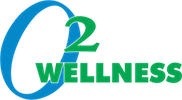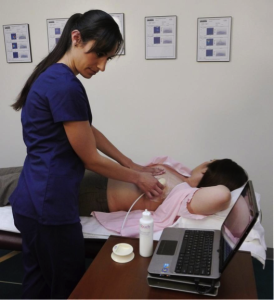Sure Touch Breast Screening
Upcoming Event: Sure Touch Breast Screening
Friday, October 9th
10:30 a.m. – 5:00 p.m.
What is SureTouch?
Pain Free, Radiation – Free Breast Exam
No harmful cancer inducing x-rays, no mechanical vises that squash the breasts.
SureTouch Tactile Breast Imaging (TBI) utilizes tactile sensing technology, that captures the sense of touch which has been used for cancer detection for thousands of years by physicians. SureTouch is a FDA-cleared technological advancement that provides clear, consistent and objective documentation of your breast exam results.
Instant Results!
Results are immediate and everything being seen on the screen is explained throughout the exam.
Only Available By Appointment!
FAQ’s
-
What age can you start getting a Sure Touch Breast exam?Just as manual breast exams are not affected by age, SureTouch is effective for younger women or older women. Because SureTouch exams are digitally stored for future reference, results can be tracked and compared for changes over time. Young patients can develop health baseline with their first test. This means more peace of mind for the patient and more control for clinicians in knowing that small masses and changes in women’s breast health may be documented and observed.
-
Does SureTouch work if I have dense breast tissue?Yes. Breast density is what mammogram measures, but SureTouch measures tissue hardness or elasticity. They are two different properties. If a breast lump is detected, SureTouch uses your breast tissue elasticity as a baseline to compare the hardness.
-
Does SureTouch work if I have breast implants?Yes. Since breast implants are placed below the breast tissue and SureTouch doesn’t require compression of the breast any palpable lesions in the breast tissue can be detected with SureTouch. SureTouch can also image breast tissue in the upper outer quadrant where more than 20% of the breast cancers occur.
-
What are calcifications? It says SureTouch can’t detect these?Calcifications in the breast ducts are detected by mammograms. Otherwise known as DCIS (Ductal Carcinoma In Situ), there has criticism about over treating these as cancer since 30% of them do not progress into cancer.
The human body has natural mechanisms to correct mutated cells that can turn into cancer, and cancer cells also need the right environment to grow. Proper diet, low in animal protein (less than 10% of caloric consumption), can keep cancer cells from growing. (TC Campbell and TM Campbell, The China Study.)
-
How is SureTouch different than an ultrasound?Ultrasound uses high-frequency sound waves that are sent out into the breast and measure what bounces back. Because it is a narrow beam that provides a crossectional view of the breast, it is difficult to scan the entire breast. Ultrasound is very effective in identifying fluid filled cysts.
A FDA-cleared breakthrough technology, SureTouch is a safe, accurate breast examination that enables all areas of the breast to be examined while offering immediate digitized results for you and your doctor. Originally developed at Harvard, SureTouch measures the reactive pressures generated by a cancerous tissue, which is more than 100 times harder than normal tissue. The device consists of a hand-held transceiver that is gently moved across the entire breast and underarm area and produces ultra-sensitive, multi-dimensional color images, which are delivered to a computer screen. With SureTouch, the clinician, patient and doctor can view the size, shape, hardness and location of suspicious masses in real time. Women have the answers they need immediately.
-
Will my doctor accept this in place of a mammogram?The breast exam that you have is your choice. Your doctor can suggest that you have a mammogram but the decision is yours. We will provide the doctor with all the backup information needed to support SureTouch with your results.
-
Is SureTouch covered by insurance?Not at this time. SureTouch exams do not have a reimbursement code for the physician to claim on an insurance form.
Contact Us
- 3551 Camino Mira Costa Suite CSan Clemente, CA 92672
- (949) 240-6713
- info@o2-wellness.com
- Get Directions
- Send Us A Message


